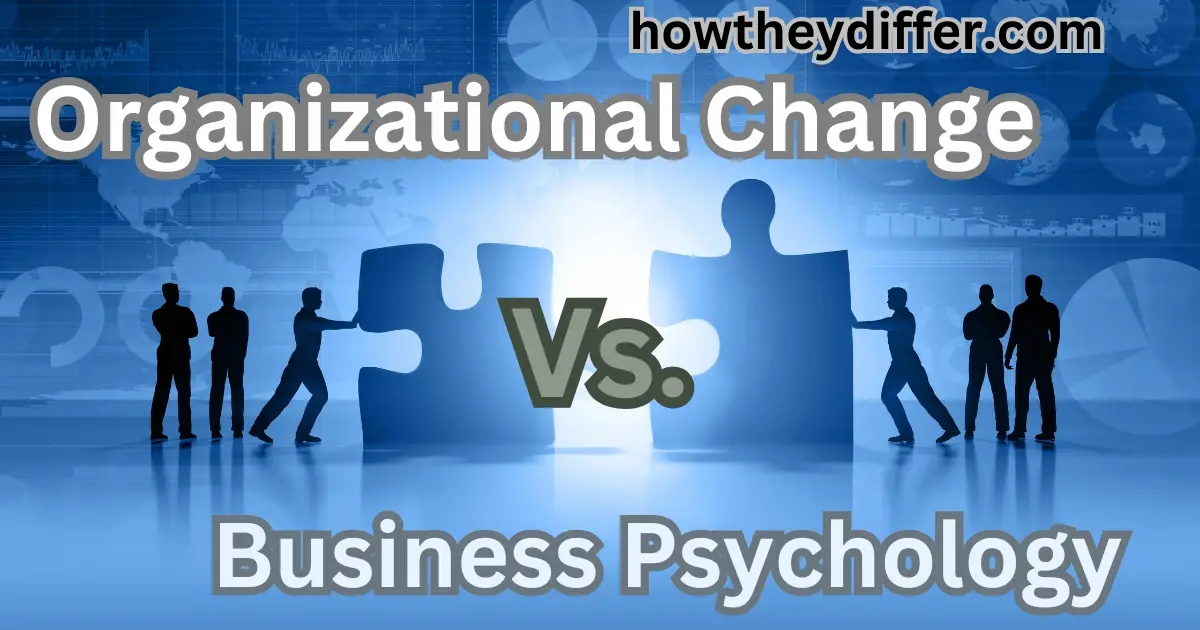We often hear about businesses changing and adapting. Maybe your favorite store got rearranged, or your parents’ company started working from home. But what’s really going on behind the scenes? This is where understanding organizational change and business psychology becomes really important.
Think of it like baking a cake. Organizational change is like changing the recipe – maybe using a different type of flour or adding chocolate chips. Business psychology is like understanding why people like certain cakes more than others. It helps us understand how people feel about the changes and how to make them work better.
In the business world, these two ideas work together. Understanding them can help companies make changes smoothly and keep their employees happy. Let’s take a closer look at each one.
What is Organizational Change?
Organizational change is about how companies change the way they do things. This can be anything from using new technology to changing how people work together. It’s like rearranging your bedroom furniture to make it work better for you.
Types of Organizational Change
There are many different ways a company can change. Here are a few examples:
- Changing how things are done: This could involve using new machines, learning new skills, or working from home instead of the office.
- Changing the structure: This might mean reorganizing teams, changing who is in charge, or even merging with another company.
- Changing the culture: This is about changing how people act and feel at work. It could involve creating a more relaxed environment, encouraging teamwork, or focusing on customer service.
What is Business Psychology?
Business psychology uses ideas from psychology to help companies understand their employees and make better decisions. It’s like figuring out why your friend loves playing video games or why your sister always chooses the blue plate.
Areas of Business Psychology
Business psychology looks at many different things, such as:
- How people think and feel at work: This includes things like motivation, stress, and job satisfaction.
- How people work together: This involves understanding teamwork, leadership, and communication.
- How to choose the right people for the job: This means using personality tests and interviews to find the best fit for the company.
Organizational Change and Business Psychology: A Closer Look
While they seem different, organizational change and business psychology are actually connected. Business psychology can help companies make changes more smoothly. For example, understanding how employees feel about a change can help the company make the transition easier.
Here’s a table to help you see the differences:
| Feature | Organizational Change | Business Psychology |
|---|---|---|
| Focus | How companies change what they do and how they do it | How people think and act at work |
| Examples | Using new technology, changing team structures, adopting new work methods | Improving employee motivation, selecting the right people for jobs, fostering good teamwork |
| Goal | Improve efficiency, productivity, and adapt to new situations | Understand and improve employee performance and well-being |
How Business Psychology Supports Organizational Change
Imagine a company decides to change its office layout to an open plan. This is an organizational change. However, some employees might feel worried about losing their personal space. This is where business psychology comes in.
By understanding these concerns, the company can help employees adjust to the new environment. They might offer training on how to work effectively in an open plan office or provide quiet spaces for focused work.
Here’s another table highlighting how business psychology can help with different types of organizational change:
| Type of Organizational Change | How Business Psychology Helps |
|---|---|
| Introducing new technology | Provide training and support to reduce anxiety and build confidence in using new tools |
| Merging with another company | Facilitate communication and team building to create a shared culture and smooth the transition |
| Implementing a new performance management system | Ensure the system is fair and motivating, and provide feedback and coaching to employees |
Conclusion
Organizational change and business psychology are two important concepts in the business world. While organizational change focuses on the changes themselves, business psychology focuses on the people involved in those changes.
By understanding both, companies can make changes more effectively and create a better work environment for their employees.
Just like with our cake example, understanding both the recipe (organizational change) and the taste preferences (business psychology) is crucial for a successful outcome.
FAQs
Some of the frequently inquired questions regarding the differences between organizational change and business psychology are as follow:
Can business psychology help with employee motivation during times of change?
Yes, business psychology can help understand what motivates employees and design strategies to keep them engaged and productive during organizational changes.
How does communication play a role in organizational change?
Communication is crucial for successful organizational change. Business psychology can help companies communicate effectively with employees, address their concerns, and build trust throughout the change process.
How can companies measure the success of organizational change?
Business psychology provides tools and techniques to measure the impact of organizational change on employee attitudes, behaviors, and performance.
Is business psychology only relevant for large companies?
No, businesses of all sizes can benefit from applying principles of business psychology. Understanding employee needs and motivations is essential for any organization undergoing change.
What are some common challenges in implementing organizational change?
Resistance to change, lack of communication, and inadequate planning are common challenges. Business psychology can help address these challenges by understanding the reasons behind resistance, improving communication strategies, and designing effective change management plans.
